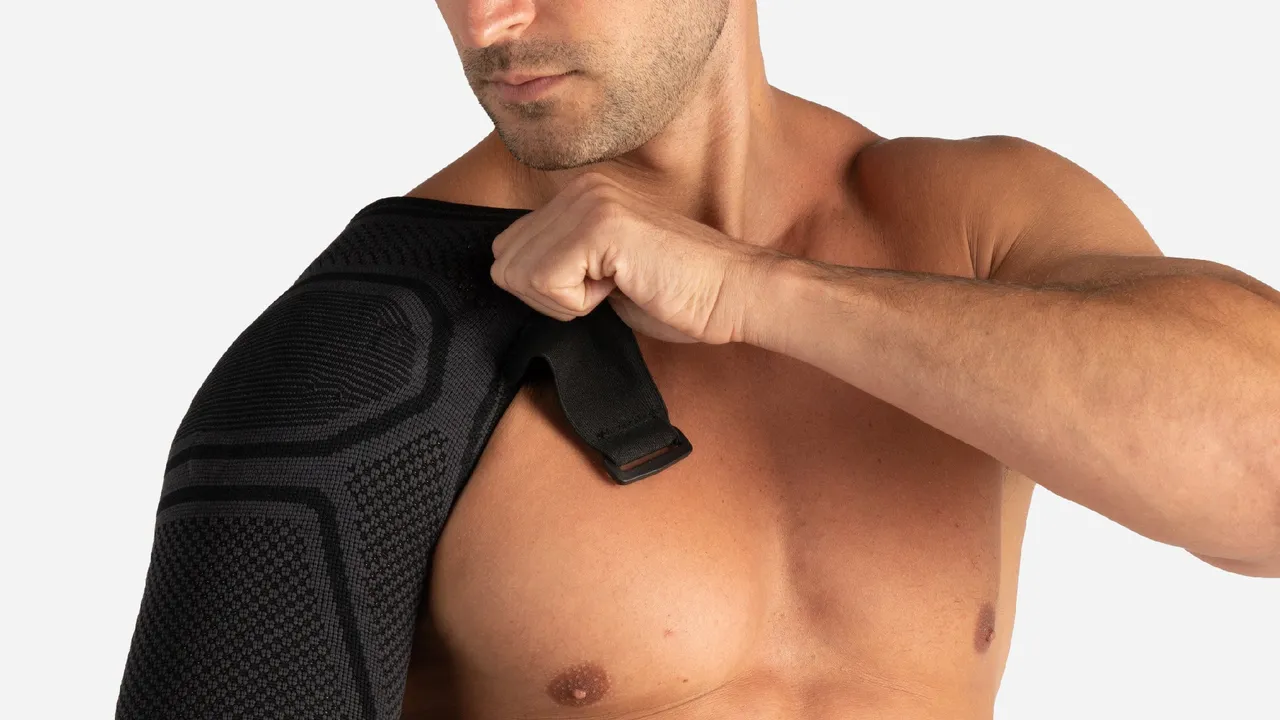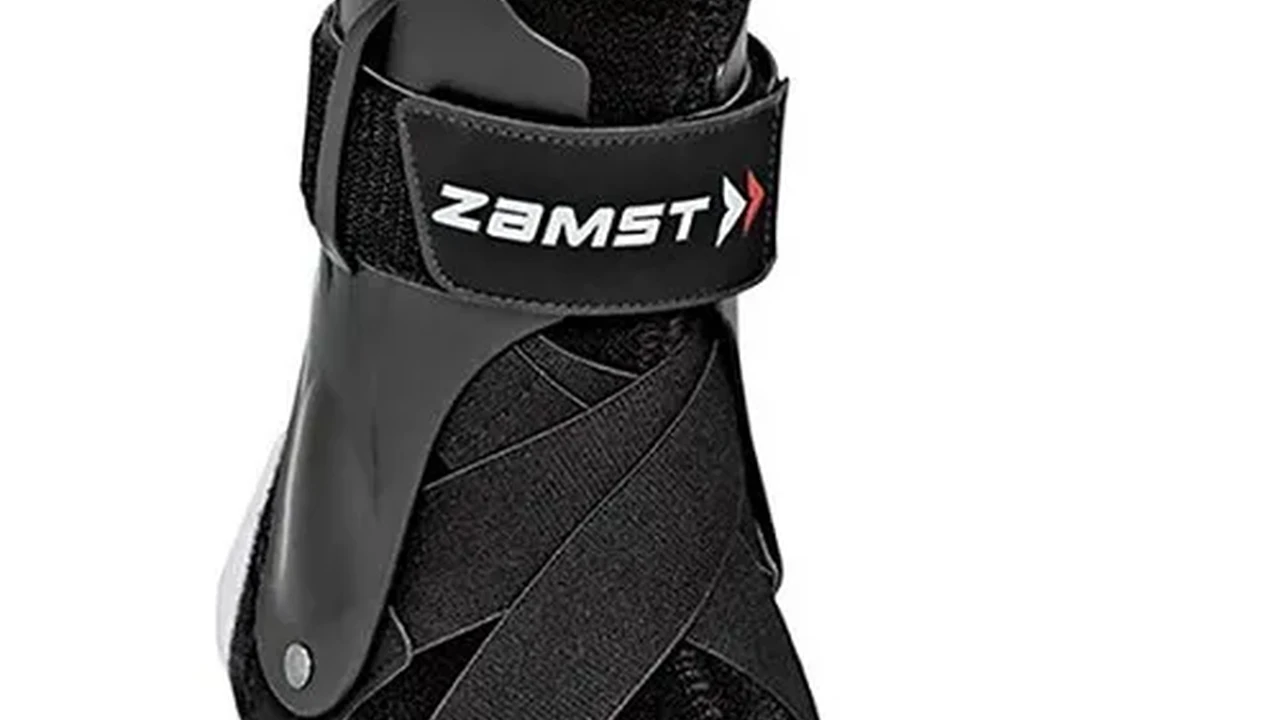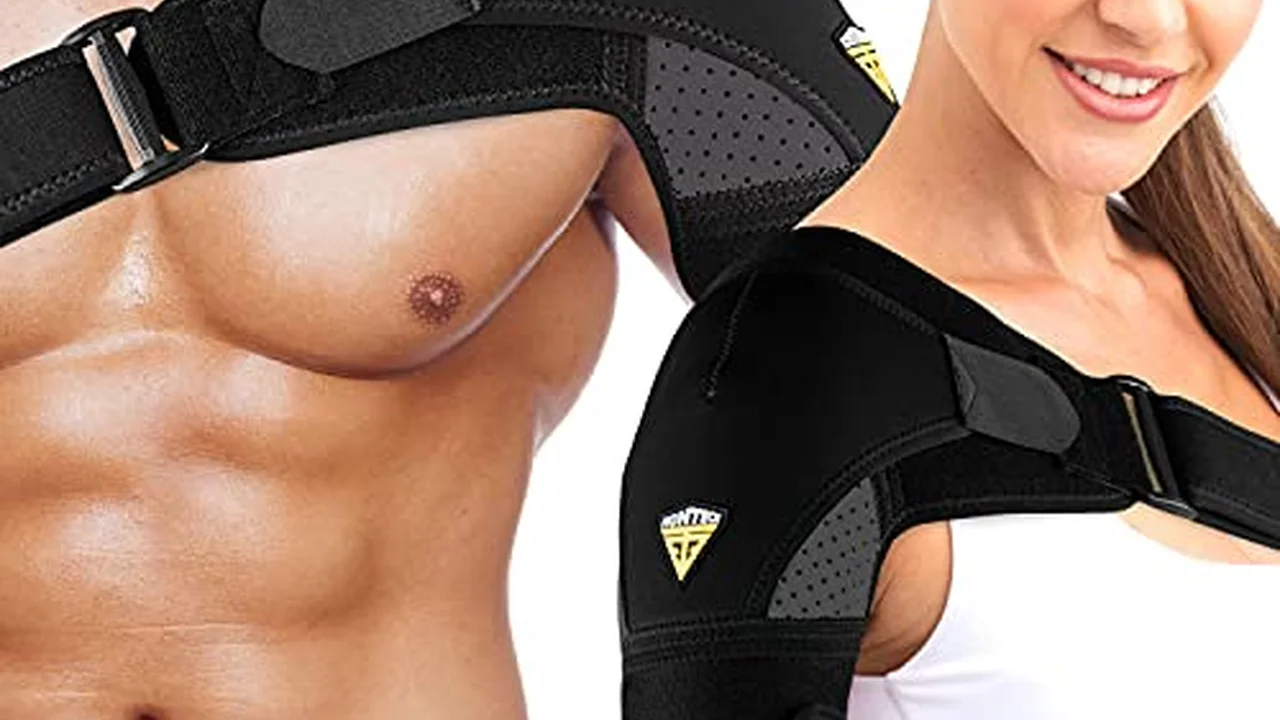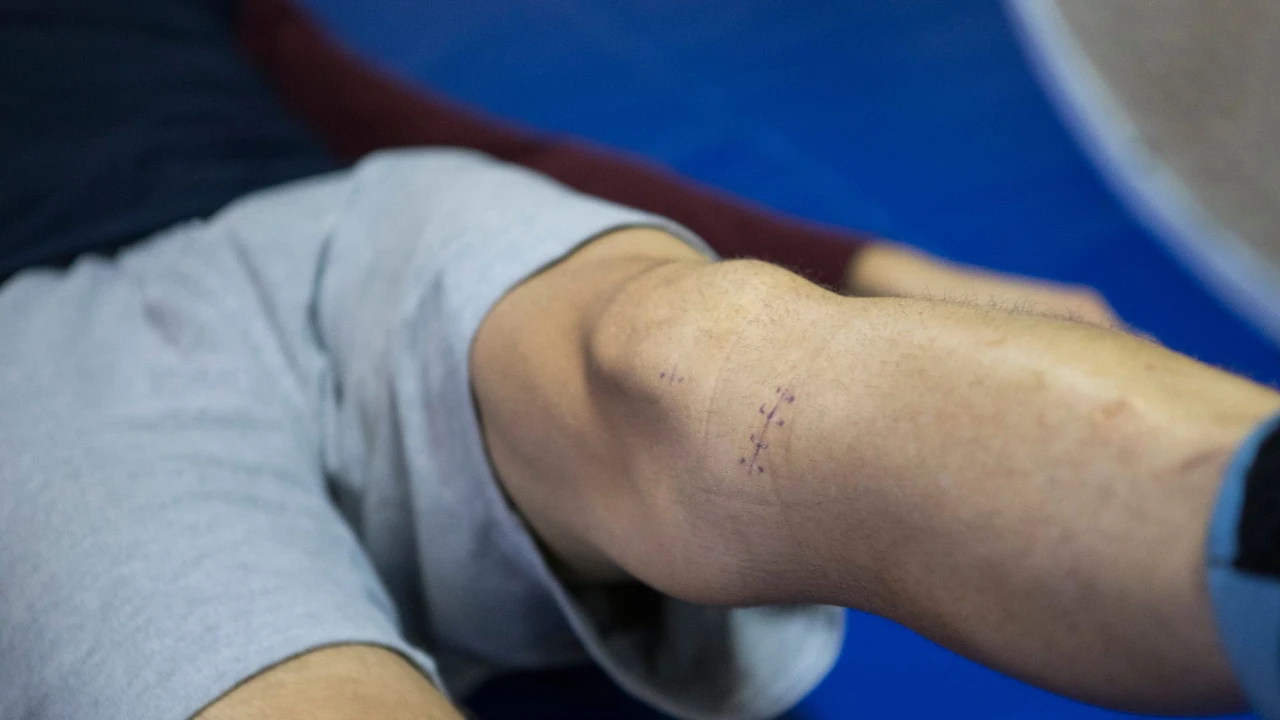Best Compression Sleeves for Shoulder Support and Recovery

Understanding Shoulder Injuries and the Role of Compression Sleeves
Shoulder injuries are a common ailment, affecting athletes, office workers, and individuals of all ages. From rotator cuff tears to dislocations and strains, the shoulder joint is susceptible to a wide range of problems. These injuries can cause significant pain, limit mobility, and disrupt daily life. Understanding the underlying causes and mechanisms of shoulder injuries is crucial for effective treatment and recovery.
The shoulder joint is a complex structure composed of bones, ligaments, tendons, and muscles. This intricate design allows for a wide range of motion, but it also makes the shoulder vulnerable to injury. Overuse, trauma, and poor posture are common culprits. For example, repetitive overhead movements in sports like baseball or swimming can lead to rotator cuff tendinitis. Similarly, sitting at a desk for prolonged periods with poor posture can strain the shoulder muscles and contribute to pain.
Compression sleeves offer a non-invasive and supportive solution for managing shoulder pain and promoting recovery. These sleeves apply gentle pressure to the shoulder joint, which can help to reduce inflammation, improve circulation, and stabilize the joint. By providing support and compression, these sleeves can alleviate pain and discomfort, allowing individuals to participate in activities with greater ease.
But how exactly do compression sleeves work? The compression provided by the sleeve helps to improve blood flow to the affected area. Increased blood flow delivers essential nutrients and oxygen to the damaged tissues, which can accelerate the healing process. Additionally, the compression helps to reduce swelling and inflammation by preventing fluid buildup in the shoulder joint. The support provided by the sleeve also helps to stabilize the joint, reducing the risk of further injury.
The benefits of using compression sleeves for shoulder injuries extend beyond pain relief and improved circulation. These sleeves can also enhance proprioception, which is the body's ability to sense its position in space. By providing sensory feedback to the brain, compression sleeves can improve coordination and balance, reducing the risk of falls and other injuries. This is particularly beneficial for athletes and individuals who engage in physically demanding activities.
Key Features to Look For in Shoulder Compression Sleeves
Choosing the right compression sleeve for your shoulder injury is essential for maximizing its benefits. With so many options available on the market, it can be overwhelming to know where to start. Here are some key features to consider when selecting a shoulder compression sleeve:
- Material: The material of the sleeve plays a crucial role in its comfort, breathability, and durability. Look for sleeves made from moisture-wicking fabrics like nylon or spandex, which can help to keep your skin dry and prevent irritation. Neoprene is another popular option, as it provides excellent insulation and support.
- Compression Level: The level of compression is another important factor to consider. Too much compression can restrict blood flow and cause discomfort, while too little compression may not provide adequate support. Start with a moderate level of compression and adjust as needed.
- Coverage: Consider the area of your shoulder that needs support. Some sleeves provide full shoulder coverage, while others focus on specific areas like the rotator cuff or AC joint. Choose a sleeve that provides adequate coverage for your specific injury.
- Adjustability: An adjustable sleeve allows you to customize the fit and compression level to your specific needs. Look for sleeves with adjustable straps or closures that can be easily tightened or loosened.
- Comfort: Comfort is paramount, especially if you plan to wear the sleeve for extended periods. Look for sleeves with seamless designs and soft, breathable materials that won't chafe or irritate your skin.
- Durability: A durable sleeve will withstand repeated use and washing without losing its compression or shape. Look for sleeves made from high-quality materials and reinforced stitching.
Top Shoulder Compression Sleeves for Support and Recovery Product Recommendations
Based on the key features discussed above, here are some of the top shoulder compression sleeves available on the market today:
1. The Incrediwear Shoulder Sleeve for Enhanced Circulation and Reduced Pain
The Incrediwear Shoulder Sleeve is a popular choice among athletes and individuals with shoulder injuries. This sleeve is made from a unique fabric that incorporates germanium and carbon, which are known for their ability to improve circulation and reduce inflammation. The Incrediwear sleeve is also incredibly comfortable and breathable, making it ideal for all-day wear.
Use Cases: This sleeve is suitable for a wide range of shoulder injuries, including rotator cuff tendinitis, bursitis, and arthritis. It can also be used to prevent injuries during sports and other physical activities. The Incrediwear sleeve is particularly beneficial for individuals who experience chronic shoulder pain or stiffness.
Pricing: The Incrediwear Shoulder Sleeve typically retails for around $60-$70.
2. The Bauerfeind OmoTrain Active Shoulder Support for Stability and Pain Relief
The Bauerfeind OmoTrain Active Shoulder Support is a premium option that provides excellent stability and pain relief. This sleeve features a three-dimensional knit that conforms to the shape of the shoulder, providing targeted compression and support. The OmoTrain also includes a removable massage pad that can be used to further reduce pain and inflammation.
Use Cases: This sleeve is ideal for individuals with shoulder dislocations, separations, or instabilities. It can also be used to support the shoulder after surgery or injury. The OmoTrain is particularly beneficial for athletes who need extra support and stability during high-impact activities.
Pricing: The Bauerfeind OmoTrain Active Shoulder Support typically retails for around $150-$180.
3. The EVS Sports SB03 Shoulder Brace for Maximum Support and Protection
The EVS Sports SB03 Shoulder Brace is designed for individuals who need maximum support and protection for their shoulder. This brace features a rigid shell that provides excellent stability and prevents excessive movement. The SB03 also includes adjustable straps that allow you to customize the fit and compression level.
Use Cases: This brace is ideal for individuals with severe shoulder injuries, such as dislocations or separations. It can also be used to protect the shoulder during contact sports or other high-risk activities. The SB03 is particularly beneficial for athletes who need to return to play after a shoulder injury.
Pricing: The EVS Sports SB03 Shoulder Brace typically retails for around $100-$120.
4. The Copper Compression Recovery Shoulder Support for Arthritis and Joint Pain
The Copper Compression Recovery Shoulder Support is infused with copper, which is known for its anti-inflammatory properties. This sleeve provides gentle compression and support, helping to reduce pain and inflammation associated with arthritis and other joint conditions. The Copper Compression sleeve is also incredibly comfortable and breathable, making it ideal for all-day wear.
Use Cases: This sleeve is ideal for individuals with arthritis, bursitis, or other conditions that cause shoulder pain and inflammation. It can also be used to improve circulation and reduce stiffness in the shoulder joint. The Copper Compression sleeve is particularly beneficial for individuals who experience chronic shoulder pain.
Pricing: The Copper Compression Recovery Shoulder Support typically retails for around $20-$30.
5. The Sparthos Shoulder Support Brace for Rotator Cuff Injuries and Discomfort
The Sparthos Shoulder Support Brace is designed to provide targeted support for rotator cuff injuries. This brace features adjustable straps that allow you to customize the fit and compression level. The Sparthos brace also includes a built-in ice pack pocket, which can be used to further reduce pain and inflammation.
Use Cases: This brace is ideal for individuals with rotator cuff tendinitis, tears, or other rotator cuff injuries. It can also be used to support the shoulder after surgery or injury. The Sparthos brace is particularly beneficial for athletes who need to return to play after a rotator cuff injury.
Pricing: The Sparthos Shoulder Support Brace typically retails for around $30-$40.
Shoulder Compression Sleeve Product Comparison A Detailed Analysis
To help you make a more informed decision, let's compare the key features and benefits of each of the shoulder compression sleeves discussed above:
| Sleeve | Material | Compression Level | Coverage | Adjustability | Comfort | Durability | Price | Best For |
|---|---|---|---|---|---|---|---|---|
| Incrediwear Shoulder Sleeve | Germanium & Carbon Infused Fabric | Moderate | Full Shoulder | No | Excellent | Good | $60-$70 | Enhanced Circulation & Reduced Pain |
| Bauerfeind OmoTrain Active Shoulder Support | 3D Knit | Moderate to High | Full Shoulder | Yes | Excellent | Excellent | $150-$180 | Stability & Pain Relief |
| EVS Sports SB03 Shoulder Brace | Rigid Shell | High | Full Shoulder | Yes | Good | Excellent | $100-$120 | Maximum Support & Protection |
| Copper Compression Recovery Shoulder Support | Copper Infused Fabric | Gentle | Partial Shoulder | No | Excellent | Good | $20-$30 | Arthritis & Joint Pain |
| Sparthos Shoulder Support Brace | Neoprene | Adjustable | Partial Shoulder | Yes | Good | Good | $30-$40 | Rotator Cuff Injuries |
As you can see from the table, each sleeve offers a unique set of features and benefits. The Incrediwear sleeve is a great option for individuals who want to improve circulation and reduce pain. The Bauerfeind OmoTrain provides excellent stability and pain relief, while the EVS Sports SB03 offers maximum support and protection. The Copper Compression sleeve is ideal for individuals with arthritis or other joint conditions, and the Sparthos brace is designed specifically for rotator cuff injuries.
Understanding Shoulder Compression Sleeves Use Cases and Benefits
Shoulder compression sleeves are versatile tools that can be used for a variety of purposes. Here are some common use cases and benefits:
- Pain Relief: Compression sleeves can help to reduce pain associated with shoulder injuries, arthritis, and other conditions. The compression helps to improve circulation and reduce inflammation, which can alleviate pain and discomfort.
- Improved Circulation: Compression sleeves can improve blood flow to the shoulder joint, delivering essential nutrients and oxygen to the damaged tissues. This can accelerate the healing process and reduce stiffness.
- Joint Stabilization: Compression sleeves can provide support and stability to the shoulder joint, reducing the risk of further injury. This is particularly beneficial for athletes and individuals who engage in physically demanding activities.
- Reduced Inflammation: Compression sleeves can help to reduce swelling and inflammation in the shoulder joint. The compression prevents fluid buildup, which can alleviate pain and improve mobility.
- Enhanced Proprioception: Compression sleeves can enhance proprioception, which is the body's ability to sense its position in space. This can improve coordination and balance, reducing the risk of falls and other injuries.
- Injury Prevention: Compression sleeves can be used to prevent shoulder injuries during sports and other physical activities. The support and compression provided by the sleeve can help to protect the shoulder joint from strain and trauma.
- Post-Surgery Recovery: Compression sleeves can be used to support the shoulder after surgery, reducing pain and inflammation and promoting healing.
Detailed Information on Shoulder Compression Sleeve Pricing and Availability
The price and availability of shoulder compression sleeves can vary depending on the brand, model, and retailer. Generally, you can find compression sleeves ranging from around $20 to $200. The more advanced and specialized sleeves tend to be on the higher end of the price spectrum.
You can purchase shoulder compression sleeves from a variety of sources, including:
- Online Retailers: Amazon, eBay, and other online retailers offer a wide selection of shoulder compression sleeves from various brands.
- Sporting Goods Stores: Stores like Dick's Sporting Goods, Academy Sports + Outdoors, and local sporting goods stores typically carry a selection of compression sleeves.
- Medical Supply Stores: Medical supply stores often carry more specialized compression sleeves designed for specific injuries or conditions.
- Physical Therapy Clinics: Some physical therapy clinics sell compression sleeves to their patients as part of their treatment plan.
- Direct from the Manufacturer: You can also purchase compression sleeves directly from the manufacturer's website.
When purchasing a shoulder compression sleeve, be sure to check the size chart to ensure that you are selecting the correct size. It is also important to read customer reviews to get an idea of the sleeve's quality, comfort, and durability.
Maintaining Your Shoulder Compression Sleeve For Longevity and Performance
Proper care and maintenance are essential for extending the lifespan and maintaining the performance of your shoulder compression sleeve. Here are some tips:
- Wash Regularly: Wash your compression sleeve regularly to remove sweat, dirt, and other debris. Follow the manufacturer's instructions for washing, which typically involve hand washing or machine washing on a gentle cycle with cold water.
- Use Mild Detergent: Use a mild detergent that is free of bleach and fabric softeners. These chemicals can damage the fabric and reduce its compression properties.
- Air Dry: Air dry your compression sleeve to prevent shrinkage and damage. Avoid putting it in the dryer, as the heat can damage the elastic fibers.
- Avoid Direct Sunlight: Avoid drying your compression sleeve in direct sunlight, as the UV rays can fade the fabric and weaken its fibers.
- Store Properly: Store your compression sleeve in a cool, dry place away from direct sunlight and heat. Avoid storing it in a tightly packed drawer or bag, as this can damage the fabric.
- Inspect Regularly: Inspect your compression sleeve regularly for signs of wear and tear, such as holes, tears, or loose stitching. If you notice any damage, repair it promptly to prevent it from getting worse.
- Replace When Necessary: Over time, the elastic fibers in your compression sleeve will lose their elasticity. When this happens, the sleeve will no longer provide adequate compression and support. Replace your compression sleeve when it starts to lose its effectiveness.
Alternative Solutions for Shoulder Pain and Injury Management
While compression sleeves can be a valuable tool for managing shoulder pain and promoting recovery, they are not the only option available. Here are some alternative solutions to consider:
- Physical Therapy: Physical therapy can help to strengthen the shoulder muscles, improve range of motion, and reduce pain. A physical therapist can develop a customized treatment plan based on your specific injury and needs.
- Chiropractic Care: Chiropractic care can help to restore proper alignment to the spine and shoulder joint, reducing pain and improving function.
- Massage Therapy: Massage therapy can help to relax the shoulder muscles, reduce pain and inflammation, and improve circulation.
- Acupuncture: Acupuncture can help to stimulate the body's natural healing processes, reducing pain and inflammation.
- Medications: Pain relievers, such as ibuprofen and naproxen, can help to reduce pain and inflammation. In some cases, your doctor may prescribe stronger medications, such as opioids.
- Injections: Corticosteroid injections can help to reduce inflammation and pain in the shoulder joint. However, these injections are typically only used for short-term relief.
- Surgery: Surgery may be necessary for severe shoulder injuries, such as rotator cuff tears or dislocations.
It is important to consult with a healthcare professional to determine the best treatment plan for your specific shoulder injury or condition. They can help you weigh the pros and cons of each option and make an informed decision.
:max_bytes(150000):strip_icc()/277019-baked-pork-chops-with-cream-of-mushroom-soup-DDMFS-beauty-4x3-BG-7505-5762b731cf30447d9cbbbbbf387beafa.jpg)






